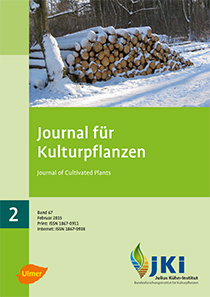Investigations on the Identification of Long Term Input of Phosphorus from Organic Sources by Standard Soil P Analysis
Keywords:
Soluble organic phosphorus, soil P extraction methods, soil test P, manure, organic fertilization, mineral fertilizationAbstract
175 soil samples from pot and field experiments with different types of organic (farmyard manure, meat and bone meal, bone meal) and mineral fertilization were used to evaluate the potential of a method to estimate relative shares of soluble organic P in water, CAL, Olsen and AR extracts/digest, based on the combination of two analytical methods (colorimetry and ICP-OES). The main aim of the study was to investigate if long-term fertilization with organic P sources is reflected by an increased share of extractable (or dissolved) organic P in the soil. The applied method worked well to estimate the relative share of organic P dissolved in water, CAL, Olsen and AR extracts. The estimated share of dissolved organic P decreased in the order P-CAL ≥ P-Olsen > P-water ≥ P-AR. However, long-term organic fertilization was not reflected in a higher share of soluble organic P than mineral fertilization. On the contrary, in some cases, organically fertilized plots displayed even higher shares of inorganic P (soluble in CAL) than minerally fertilized plots. Obviously, the received organic P was not enriched in the soluble organic substance of the soil, but was either transferred quickly into inorganic P forms by microbial soil processes stimulated by the large addition of organic matter from MBM/manure, or it was turned into stable organic P compounds which were not solubilized by the tested extractants. Neither the role of soil pH, nor that of organic carbon with regard to influencing relatives shares or organic P or, rather, the turnover of soluble organic into insoluble organic or into inorganic P in agricultural soils, could be clarified within this study and thus warrants further research.
DOI: 10.5073/JfK.2015.02.01, https://doi.org/10.5073/JfK.2015.02.01
Published
Issue
Section
License
The content of the journal is licensed under the Creative Commons Attribution 4.0 License. Any user is free to share and adapt (remix, transform, build upon) the content as long as the original publication is attributed (authors, title, year, journal, issue, pages).
The copyright of the published work remains with the authors. The authors grant the Journal of Cultivated Plants, the Julius Kühn-Institut and the OpenAgrar repository the non-exclusive right to distribute and exploit the work.







